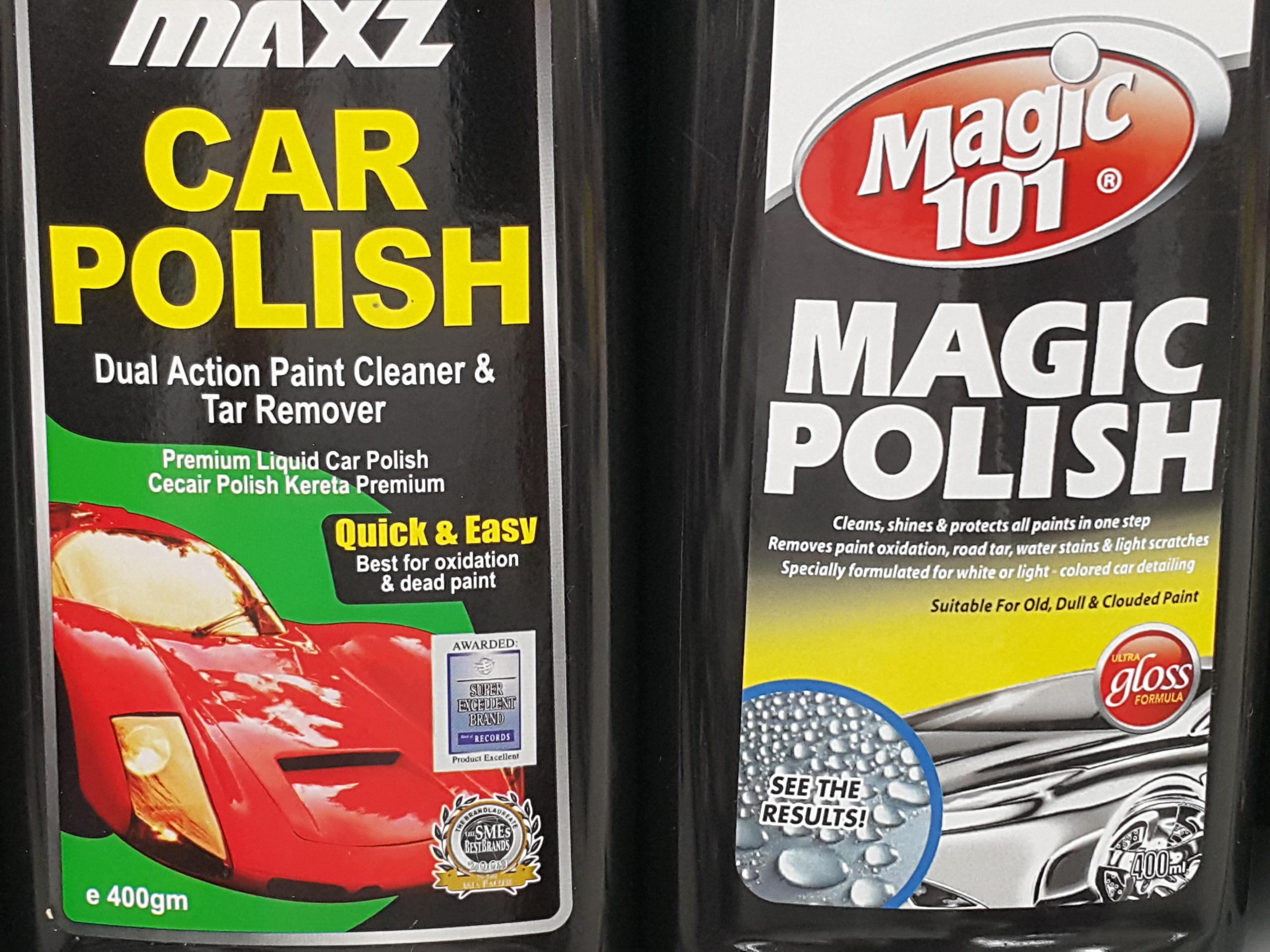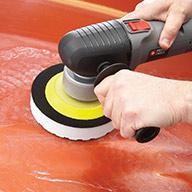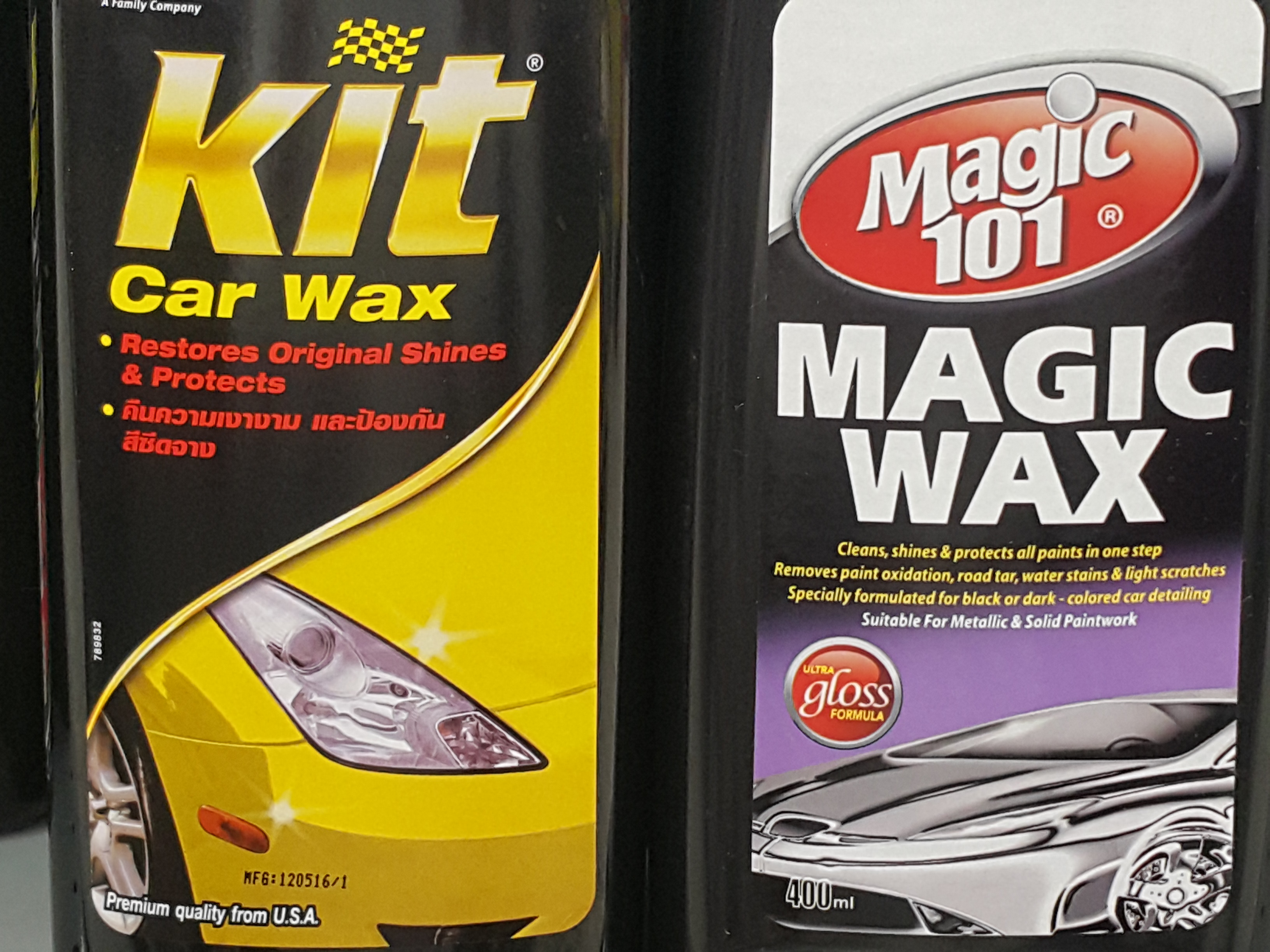Car polishing
There is often confusion between car polishing and car waxing. Polishing should always come first. True car polishing is a form of paint correction whereby our body paintwork is restored in a permanent way in its depth, shine and gloss through the removal of scratches, blemishes and other paint imperfections. It is done by removing thin layers of paint coat (paint correction) by applying an abrasive compound in the car polish or wax onto our car body paint. It makes small scratches and swirls on our car body disappear, leaving an even, like-new surface behind. After this is done, we can then carry out car waxing to add shine and gloss to our car. Car waxing adds a protective layer that prevents contaminants from adhering to our car body and resists new imperfections. In addition, it is what gives our car paint a deep shine and glossy as-good-as-new look.
However, many products that are sold as car polish do not usually have abrasives in them. They may have chemical cleaners that have ingredients that use solvents and chemicals to dissolve and remove oxidised material or dirt on car surfaces but do not contain any form of true polish or abrasive material.
Cleaner car waxes, ie. polishes that do not contain abrasives are good for beginners to start polishing our cars with as we can use it as often we like without making any paint correction. These products actually perform the ‘polishing’ or ‘cleaning’ using chemicals and not abrasives thus restoring and enhancing the car body gloss. If our car paint is still in relatively good condition, we can use these cleaner car waxes or milder polish without abrasives. They should be sufficient to remove light swirls and scratches on our car body. Where car paintwork is old or heavily damaged, or where more serious body paintwork restoration is required, the services of a professional detailer or car care expert will probably be needed.
Car polishing done by ourselves can be easily carried out by hand or by a machine polisher, if we can get hold of the equipment. If done by hand, we use a clean microfibre cloth and apply a drop of polish to the cloth. It is good practice to test out on a small discreet area first to check for discolouration, damage, texture, and any other changes that might happen on our car with a product never used before. We wipe the cloth with the polish across a 2-ft by 2-ft section at a time. We rub in an even circular motion, adding polish to the cloth as we go and using a new section of the cloth for new areas. We apply sufficient pressure only to clean the top layers of our car bodywork and are careful not to wear away the car’s paint and coating over time. To protect delicate areas like rubber moulding and plastics on our car body from being affected by the chemicals in the car polish, we can cover these parts with masking tape.
If we use a machine polisher, it may take up lesser energy on our part but care must also be given on the amount of pressure to apply on the polisher so as not to over polish our car paintwork. When using a machine polisher, we put on the applicator pad on the polisher and then add a small amount of polish to the pad. We begin with a low speed, lightly spreading the polish around the working section and then adjusting to a higher speed on the area being polished. We work in the polish using back-and-forth strokes creating a crosshatch pattern. We continue until the polish thins and is evenly applied, and then wipe clean with a microfibre cloth. This process is repeated for each section until the whole car is complete.
Car waxing
Car waxing helps provide protection and visual enhancement to our cars. It can help nourish and enhance the appearance of the outermost layer of our car body. Restoring paintwork, removing defects, scratches, and loss of shine will require the use of abrasives or cleaners in polishes.
Our cars would have had a new clear coat of paint when it was first manufactured, but this coat wears off over time and the paint is left to fend for itself against the elements. To protect the paintwork, we use car wax. Wax is sacrificial in that it will wear off over the course of a few months and will need to be re-applied if we want to maintain protection on our car body paintwork. The wax applied on our cars absorb stains and small scratches before those hazards make it to the paintwork.
Car wax can come as a paste, liquid or cream. A popular type of car wax used is the carnauba-based (natural) wax which can come in various forms. Others prefer synthetic polymer waxes, also known as paint sealant. One application of any of this wax can usually last about one and a half to two months.
Like our car polish, we can either apply wax manually by hand or by using a machine polisher. If using liquid wax, we remember to shake the containers before use and from time to time during application so as to get an even mix of the wax. If applying manually, we put a few drops of the wax on a clean mircrofibre cloth and rub evenly on small sections at a time in circular motion. Using a machine polisher, we apply the wax to the foam applicator and rub it into the finish with a swirling motion. As it dries, the wax will form a haze on the car surface. We wipe off the haze from the car surface with a clean microfibre towel. We repeat this process until the whole car is waxed. It is common to apply two coats of wax when waxing our cars, for the second coat to cover areas that the first might have missed. If our car is often kept outdoors, it would be good practice to wax our car once every few months to maintain the shine on the paintwork.
Read other posts on DIY Car Cleaning Tips for Exterior and DIY Car Care Tips for Interior.




